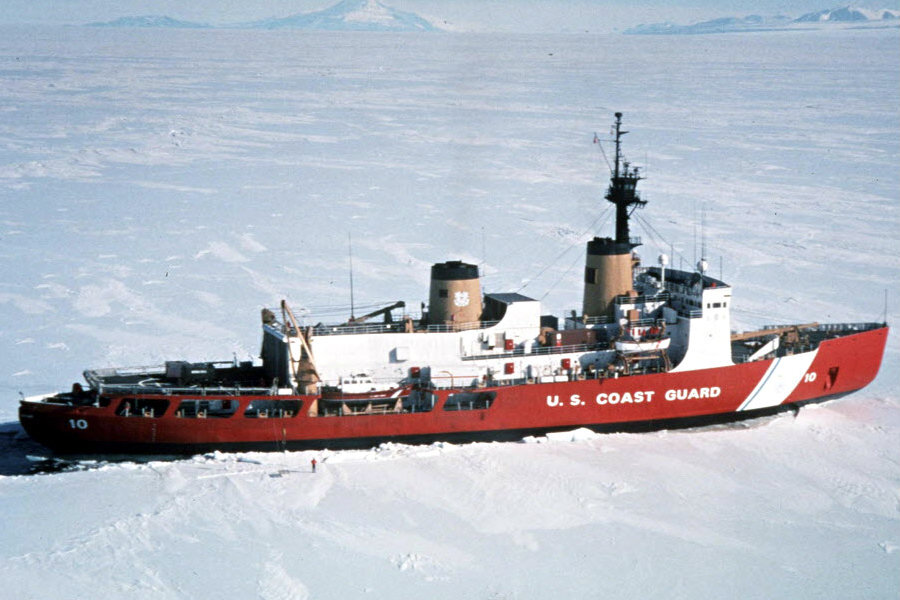Icebreaker envy? Why Obama wants more icebreakers in the Arctic
Loading...
President Obama wants new heavy icebreakers in the Arctic sooner rather than later.
On Tuesday – the second day of his historic three-day trip to Alaska to highlight the causes and effects of climate change – the president propsed speeding up the timetable for buying and building new ships that can operate year-round in the nation’s polar territories, The New York Times reports.
The plan, which included accelerating the construction of a new Coast Guard icebreaker by two years, would strengthen US presence in the Arctic, where a changing climate is creating new economic opportunities for a slew of countries, especially those with territorial claims in the region: Canada, Norway, Denmark, Russia, and the United States.
"Many forecast Arctic summers will be free of ice in a matter of decades, potentially opening the region up to hundreds of billions of dollars in investment, including energy production, shipping, and fishing," the Council of Foreign Relations reported last year. "The thaw will also pose new security demands as greater human activity induces states to increase their military and constabulary presence."
With only two heavy icebreakers available for everything from rescue missions to defending US territory to protecting the environment, the Coast Guard is not equipped for the new realities of Arctic activity, according to a July Congressional Research Service report on the need for icebreaker modernization.
The Coast Guard's only active heavy polar icebreaker, Polar Star, is almost 10 years over its intended 30-year service lifespan; its sister ship, Polar Sea, went inactive in 2011. A third Coast Guard ship, Healy, began service in 2000, but it is a "medium polar icebreaker" primarily suited to supporting scientific research, the report found.
"Russia, on the other hand, has 40 icebreakers and another 11 planned or under construction," the White House said. President Vladimir Putin has also stepped up his country’s military deployments and permanent infrastructure in the region over the last few years, even going so far as to restore abandoned Soviet-era bases and claim ownership of the North Pole. Early last month, Russia submitted its latest claims over a vast swath of the Arctic Ocean to the United Nations, The Christian Science Monitor reported.
Nor is Russia the only nation jostling for position in the Arctic. Canada, Finland, and Sweden all have bigger icebreaker fleets than the US, NPR reports, while China, South Korea, and Singapore are exploring the possibility of shipping commercial cargo to European markets via Arctic waters, according to the New York Times.
“The United States really isn’t even in this game,” Adm. Paul F. Zukunft, the Coast Guard’s commandant, said in a Washington conference this year.
But the cost, not to mention the bureaucratic processes, involved in procuring even one new icebreaker could be prohibitive. The Alaska Dispatch News reports:
The Coast Guard says it could take about $1 billion and a decade to secure another heavy icebreaker, mostly because a long checklist of federal agencies would have a stake in it, and would provide input and ensure their needs are satisfied … [Former NASA administrator Sean O’Keefe, now a senior advisor for the Center for Strategic International Studies, argues that] securing a new icebreaker meets all the objectives for the Obama administration’s national security initiatives and Arctic policy, but federal agencies are bottlenecked by traditional procurement.
Mr. Obama’s proposal includes purchasing a new heavy icebreaker by 2020 instead of the original deadline of 2022, planning construction for more icebreakers, and revising outdated maps for regions with newly open waters.






